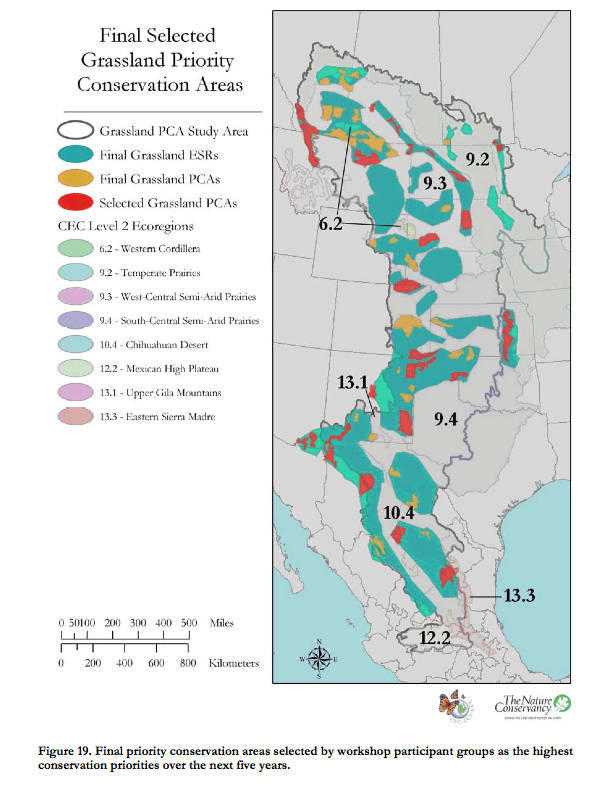In 2003, the North American Commission for Environmental Cooperation, a multi-national organization dedicated to diverse projects related to conservation in all of North America, produced a large study of Grasslands Conservation. The study involved a variety of scientists studying grassland ecosystems throughout the North American Great Plains and prairies (including Canada and Mexico). The overall goal was to identify key habitat areas and to establish strategies for conservation.
As far as key habitat areas, I was excited to see that according to one of their maps, the proposed route for the Great Plains Trail passes (almost exclusively) through what the commission calls either PCAs (Priority Conservation Areas) or ESRs (Ecologically Significant Regions).
The two main areas that did not fall into one of these categories were the Black Hills area in South Dakota (not technically a grassland), and the Guadalupe Mountains area of west Texas (already a national park). See the map below:
But as I looked their extensive list of strategies for conservation, I couldn’t help but notice that recreation was not a major consideration in their plan.
I believe this is where the Great Plains Trail fits in. Recreation, along with other conservation efforts, is an important way to help protect the grasslands of North America.
I am a strong believer in learning and appreciating by doing. If people do not experience the grasslands, how can they want to protect them?


